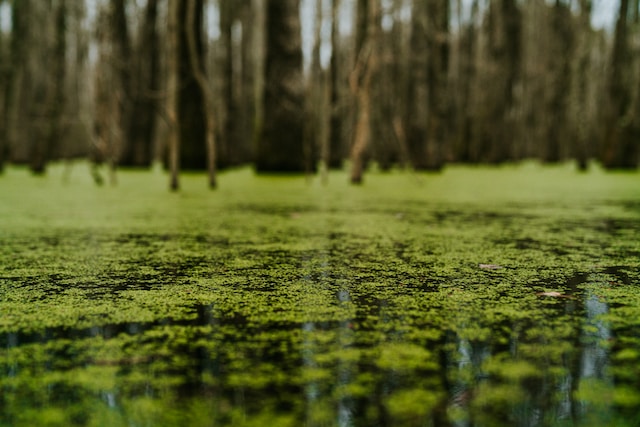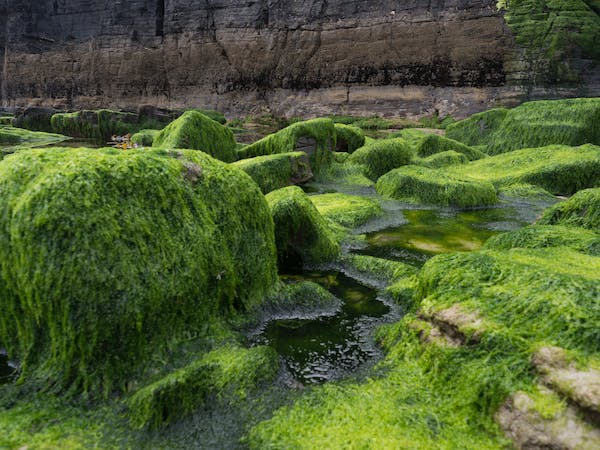Climate change is one of the realities faced by the world in the present century. Although the post-industrial revolution comes with its world-changing benefits, it has been proven astronomically that the increase in the rate of greenhouse gas emissions has adverse effects on the planet. These effects include climate change, sea levels, precipitation, ocean temperature, surface air, coastal areas, human health, forests, agriculture, wildlife, and water resources.
One of the solutions to tackle the effects of greenhouse gas emissions is growing large quantities of algae. These photosynthetic organisms can significantly help with carbon capturing and climate change mitigation. Here we explore how algae can help deal with global climate crises.
What to Know About Algae
Algae are essential organisms found in aquatic environments with several significant benefits. Algae come in different types, including:
- Green algae (Chlorophyta)
- Brown algae (Phaeophyta)
- Yellow-green algae (Xanthophyta)
- Red algae (Rhodophyta)
- Fire algae (Pyrrophyta)
- Golden-brown algae and diatoms (Chrysophyta)
- Euglenoids (Euglenophyta)
Algae is very important in aquatic ecosystems. They create the energy base of the food network for all aquatic living organisms. Besides, studies show they produce oxygen in large quantities in lakes, rivers, and oceans. Accessibility to CO2, water, phosphate, sunlight, and nitrogen is vital for algae to grow efficiently.
Since there are several algal strains, their compositions are different. And how each is cultivated can also influence the composition. Nevertheless, the algal main composition includes protein, lipids, carbohydrates, and carotenoids, such as fucoxanthin and astaxanthin, lutein, and nucleic acids. Moreover, Algae as photosynthetic organisms are characterised by:
- The production of quality non-fuel co-products
- High lipid accumulation
- Excessive biomass production
- CO2 sequestration
Sequestering carbon for growth is one of the functions of algae. With this process, they can efficiently mitigate greenhouse gasses that can cause climate change. Algae can produce biomaterials, biofuel, and bioenergy from land biomass.
The Role of Algae in Carbon Capture and Climate Change Mitigation
You should have heard the great extent of how forestation is helping the planet. It does this by slowing down global warming by reducing CO2 in the atmosphere and introducing more O2. As carbon sinks, Trees reduce CO2 from the atmosphere through photosynthesis and change it to biomass.

The paragraph above shows one of the benefits of trees to ecosystems. But the trees might not be the sole saviour in saving the earth from the global crisis. This is because forestation has its limitations and consequences. The process can lead to the following, according to a working paper published by World Research Institute (WRI):
- Technological and scientific difficulties in measurement and monitoring
- The displacement of farmlands
- Limited public funding for carbon-beneficial land management
Here, algae show themselves as a saviour – looking to oceans for more effective and scalable way-outs. So, what are the uses of algae that help with carbon capture and climate change mitigation?
Carbon Sequestration
Carbon sequestration refers to the process of efficiently capturing and storing atmospheric carbon dioxide. This method helps reduce the quantity of CO2 in the atmosphere to reduce climate change. Studies have shown that the process can enhance air quality by increasing O2 concentration and decreasing CO2 levels.
Algae are more efficient than trees400 times when used in bioreactors to remove carbon dioxide from the atmosphere. Algae can handle more CO2 than trees due to their quality to cover more surface area and grow more rapidly as they produce more biomass.
How do trees and algae sequester CO2? They both do this naturally. For trees, CO2 is consumed as photosynthesis process. They absorb carbon into their roots and trunks and offer oxygen in return into the air. For algae, the same process is replicated. However, what is done differently is absorbing the carbon in the form of more algae.
Fuel
The second use of algae is for the production of biofuels. These fuels are extracted from living matters directly. With this, algae can offer a more sustainable alternative to liquid fossil fuels like petroleum. Interestingly, algae have offered more than five thousand biofuel gallons from one acre over the years.
What could make algae a remarkable renewable fuel source is its unique energy-storage system. There are algal strains that store energy in a natural oil form. The oil must be extracted to get the raw material to produce fuel for planes, trains, trucks, and cars.
Raw Material
Polymers can be created from algae. And as a replacement for plastic, they are used in 3D printing. It has also been claimed that the local algae polymers can make waste bins, tableware, and shampoo bottles.
Industrial manufacturing processes affect the planet and contribute to global warming. So, using algae can greatly help by subtracting CO2 from the atmosphere– they can help the environment when used as a raw material in a healthy mode of production.
Moreover, several companies are interested in what they can produce using algae fibres. Some produce foam from them. The algae foam can then be used to make products, such as surfboards and shoes, with soles produced from petroleum.
Food
Climate change can, in no small way, affect agriculture and food supplies. They can increase rainfall variability, affecting livestock productivity and crop yields. From this, risks of malnutrition and hunger should be expected.
Algae is one of the solutions to this global climate crisis affecting the agricultural sector. They can offer valuable products. For instance, Arthrospira platensis (spirulina), a filamentous and multicellular blue-green alga, can be a food supplement.
Can food from algae help mitigate climate change? Yes, they can. In fact, they are excellent food supplements, biostimulants, bio fertilisers, biochar feedstocks, and livestock feeds. All these make algae one of the best ways to promote the climate resilience of food production and agricultural livelihoods. Besides, they help mitigate climate change by transforming greenhouse gasses into physical form or reducing their emissions.
| Agri-food Applications | Significance |
|---|---|
| Food supplements | Help to address malnutrition and improve health areas with poor diet, being quality sources of nutrients, including vitamins, lipids, and high-quality proteins; Require no fertile land, could recycle water, and be independent of local weather; Climate resilient. |
| Biostimulants and biofertilisers | Natural alternative options to boost crop production by providing nutrients to plants; Stimulate chemical and biological processes in microbes or plants; Build the resilience of crops to face stresses (such as soil salinity, water scarcity, and elevated temperatures) related to climate change. |
| Biochar feedstocks | Improve soil fertility; Enhance the capacity of soil to keep water. |
| Livestock feeds | Provide protein-rich complement to staple feeds (such as feed crops and grasses) to improve the sustainability of livestock production; Better nutritional quality of products and improved productivity from fish, poultry, pigs, sheep, goats, and cattle; Offer a secure source of feed where climate change leads to livestock death. |
Conclusion
Algae should be considered essential organisms within ecosystems, as their roles are invaluable. They are photosynthetic organisms that can help capture and store carbon and combat climate change– algae remove CO2 from the atmosphere and store it as biomass. They also put oxygen as a replacement.
Several companies have started to take advantage of these organisms’ benefits. You, as an individual, can also play your little part in helping the movement to keep the planet safe.
Do you ask how? You can plant a tree, help clean the ocean, see algae as a potential food source, buy algae-made products, work for companies that seek to keep the environment healthy for everyone, and so on. Through collective efforts, the problems of the world can be solved.


